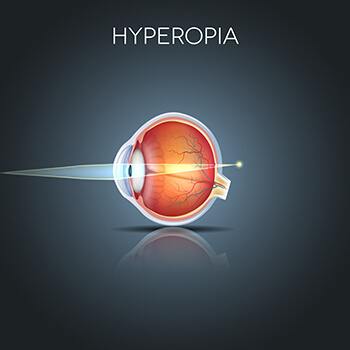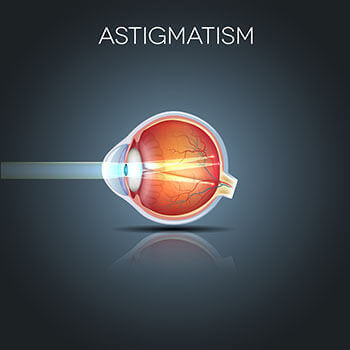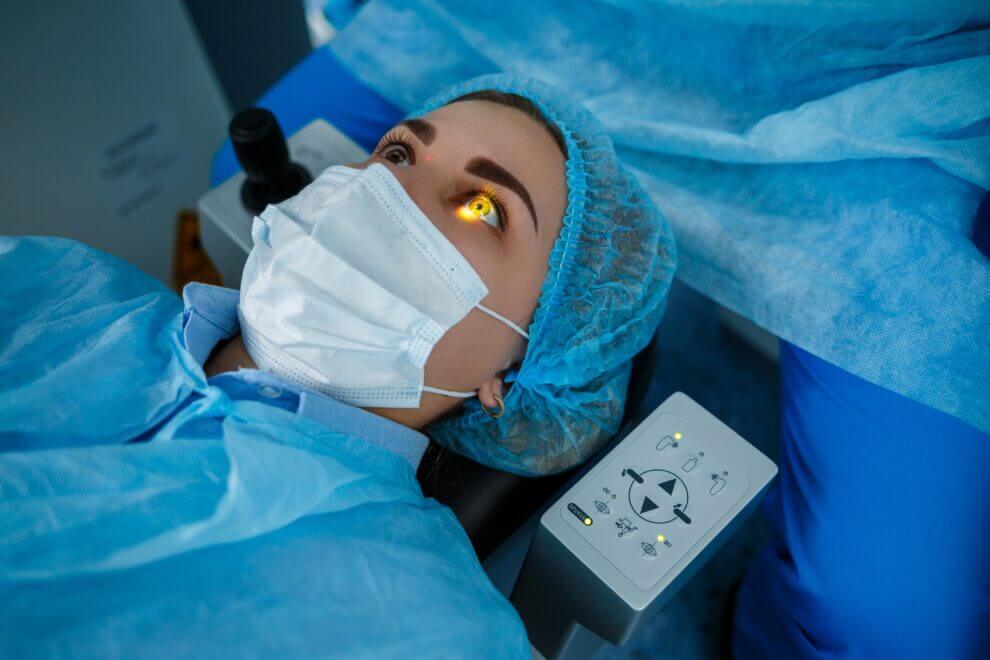LASIK (Laser-Assisted In Situ Keratomileusis) is one of the most popular and well-known procedures for correcting myopia (nearsightedness), hyperopia (farsightedness) and astigmatism. During this blade-free procedure, a laser gently reshapes the cornea – the clear window in front of the eye – to improve your vision and reduce your dependence on glasses and contacts.

In order to qualify for LASIK, patients must meet the following basic requirements:
If you meet the above guidelines, we invite you to come to our office for an evaluation with Dr. Nightingale to determine if you are a strong candidate for LASIK.

When the eye is too long or the cornea is too steep, light entering the eye cannot be focused correctly (focuses before the retina) which causes distant objects to appear blurry.

When the eye is too short, light entering the eye cannot be focused on the retina (focuses past the retina) which causes intermediate and near objects to appear blurry.

When the cornea is irregularly shaped, light entering the eye cannot be focused sharply on the retina which causes blurred vision at all distances.
Dr. Nightingale and our staff will conduct a detailed analysis of your vision and eye health to determine if you are a strong candidate for LASIK. The evaluation will include the following:
After consideration of this extensive evaluation, Dr. Nightingale will be able to determine if you are a strong candidate for LASIK. In the event you are not a strong candidate for LASIK, Dr. Nightingale can determine whether you are a suitable candidate for other vision correction procedures like PRK or Refractive Lens Exchange. Vision correction surgery is not suitable for many patients and Dr. Nightingale will also inform you if you are not a good candidate for any vision correction procedure.

On the day of your LASIK procedure, your eyes will be numbed with anesthetic eye drops and you will be given a sedative medication (Valium) to help you relax. Dr. Nightingale will review the LASIK treatment plan with you.
After the reshaping of your cornea is complete, the corneal flap is gently returned to its original position where it self-seals. You will be brought to a room to relax and Dr. Nightingale will review some post-operative instructions with you.
Conventional LASIK involves using the standard method of measuring a patient’s glasses prescription as the input to the laser. Dr. Nightingale carefully determines your optimal glasses during your LASIK evaluation visit in order to determine the best LASIK correction.
Custom LASIK uses a special measurement device and computer to create a map of all the subtle imperfections of a patient’s vision. This is called a “Wavefront Map” and it is unique to each patient, much like a fingerprint. Custom LASIK utilizes these highly precise measurements, in addition to a patient’s glasses prescription, in order to form a patient-specific treatment profile. Dr. Nightingale prefers custom treatment to conventional. We utilize the iDesign suite and Star S4 excimer laser by Johnson & Johnson for our treatments.
Dr. Nightingale has received extensive training as a refractive surgeon at some of the most renowned institutions in the world. He has treated thousands of patients to achieve superior refractive surgery outcomes. He has a deep commitment in achieving the best outcomes and he will be directly involved in your care starting from your preoperative evaluation.